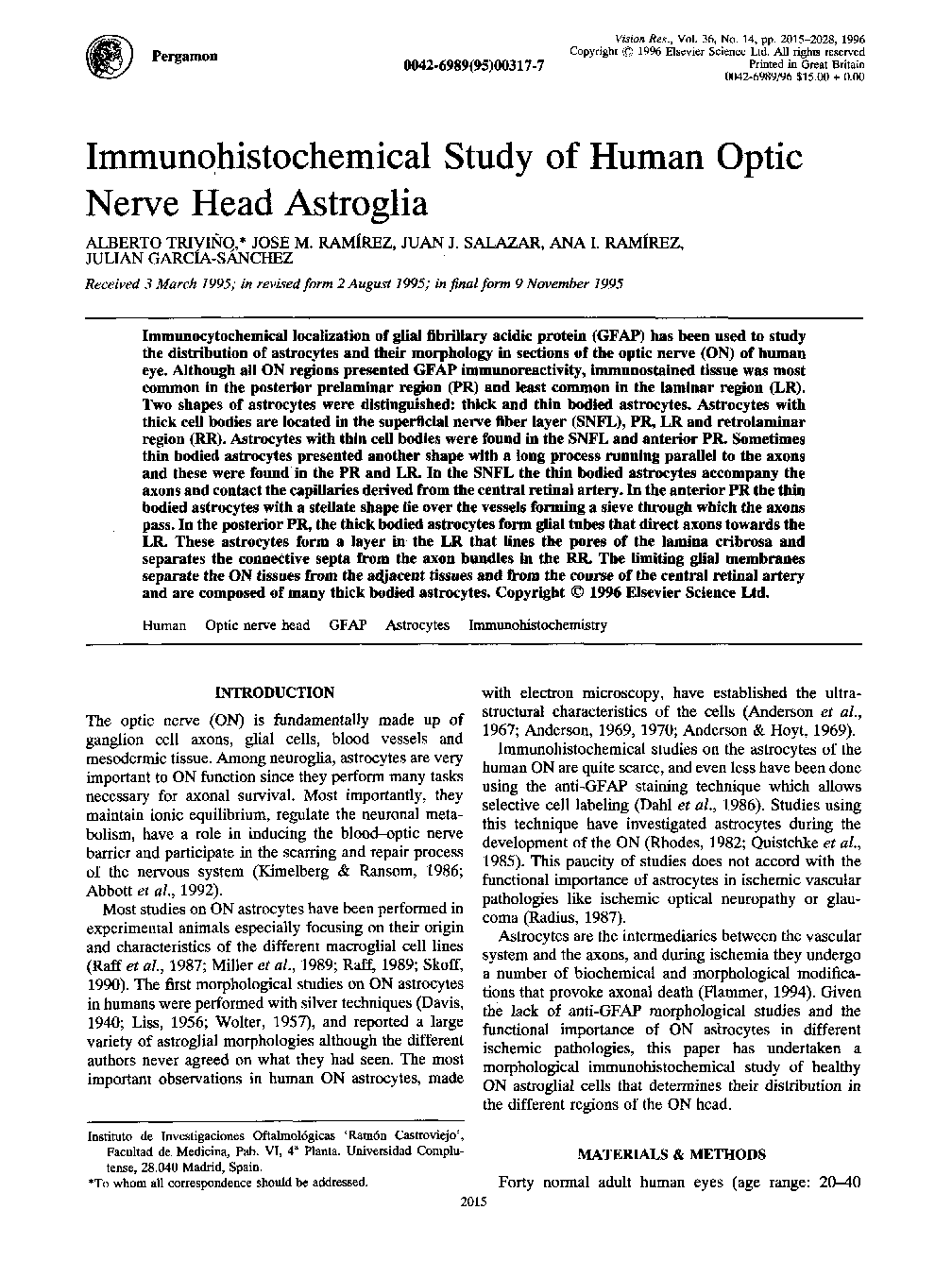| Article ID | Journal | Published Year | Pages | File Type |
|---|---|---|---|---|
| 4038270 | Vision Research | 2015 | 14 Pages |
Immunocytochemical localization of glial fibrillary acidic protein (GFAP) has been used to study the distribution of astrocytes and their morphology in sections of the optic nerve (ON) of human eye. Although all ON regions presented GFAP immunoreactivity, immunostained tissue was most common in the posterior prelaminar region (PR) and least common in the laminar region (LR). Two shapes of astrocytes were distinguished: thick and thin bodied astrocytes. Astrocytes with thick cell bodies are located in the superficial nerve fiber layer (SNFL), PR, LR and retrolaminar region (RR). Astrocytes with thin cell bodies were found in the SNFL and anterior PR. Sometimes thin bodied astrocytes presented another shape with a long process running parallel to the axons and these were found in the PR and LR. In the SNFL the thin bodied astrocytes accompany the axons and contact the capillaries derived from the central retinal artery. In the anterior PR the thin bodied astrocytes with a stellate shape lie over the vessels forming a sieve through which the axons pass. In the posterior PR, the thick bodied astrocytes form glial tubes that direct axons towards the LR. These astrocytes form a layer in the LR that lines the pores of the lamina cribrosa and separates the connective septa from the axon bundles in the RR. The limiting glial membranes separate the ON tissues from the adjacent tissues and from the course of the central retinal artery and are composed of many thick bodied astrocytes. Copyright © 1996 Elsevier Science Ltd.
